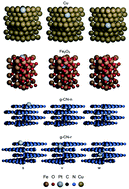Single atom heterogeneous catalysts, SAHCs, have been considered as one of the holy grails in catalysis as they enable the best utilization of scarce and expensive catalytic noble metals. Obtaining atomic dispersions in a matrix is relatively easy but the thermodynamics favour the formation of nanoparticles, as roughly saying, the cohesive energy per atom is gained by agglomeration. The nature of SAHC interactions with the matrix is crucial as it controls the electronic structure of the atom, its charge, the coordination pattern (that might be different from a solid) and the overall catalytic ensemble. In order to avoid coalescence, SAHC interactions with the carrier should be strong enough that the electron clouds of catalytically active atoms are compromised in bonds with the host lattice and that they are made catalytically inert as no additional bonds can be formed. The dispersion of single catalytic atoms is controlled by the relative bond strength between the metal and the matrix, the metals’ own cohesive energy and the topology of the active adsorption sites available in the matrix. As a consequence, a few classes of hosts including metals, oxides, carbon nitrides, molecular crystals and metal organic frameworks allow the efficient formation of SAHCs. So far, these matrixes have been examined independently and thus a common framework to study these SAHCs has not been proposed. Theoretical tools hold the key to investigate the properties of the potentially catalytic metals transversally (in different carriers), which is precisely the aim of the present work. We have checked all these aspects by studying the same single atom, Pt in oxides, metals and carbon nitride. Particularly we have found that the nature of the different SAHCs is strongly dependent on the matrix as it affects the charge and position of the atomic levels. In addition, the matrix atoms can also participate in the reactions which has an impact on the overall SAHC reactivity illustrated by the interaction with hydrogen. With respect to SAHC stability, the major threat to these compounds, the most favourable case is found when cationic (still active) species are formed since coalescence is prevented by electrostatics.
